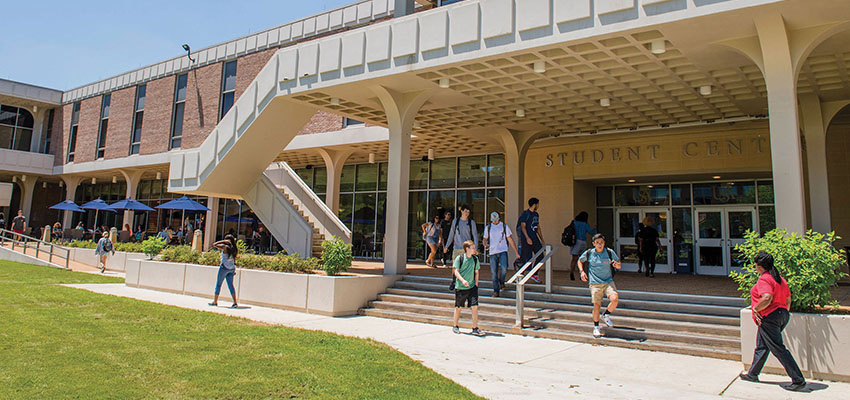Building Blocks
Posted on December 11, 2023 by Thomas Becnel

An architectural tour of the University of South Alabama begins with a string of mid-century modern buildings set in suburban west Mobile.
Instead of grand towers around a grassy quadrangle, as seen on so many college campuses, the South structures blend into the piney woods. Lots of reddish tan brick and thin bands of windows. A modest start for a commuter college, founded in 1963, just beginning to grow.
Over the years, as enrollment increased and students began living on campus, University buildings became more eclectic and ambitious. Fewer flat roofs and slit windows. More courtyards and atriums, metal fixtures and curtain wall glass.
Marx Library, built in 1968, got a dramatic expansion and face-lift in 2003. A generation of South students have enjoyed a four-story glass wall which offers natural light and sweeping views across campus.
South architectural guidelines now call for three- and four-story structures with distinct levels of brick and cast stone. Gateway buildings to campus include the Health Sciences Building, the Student Recreation Center and Shelby Hall. All three are L-shaped structures with striking rotundas that join separate wings. In the early years, buildings on campus were constructed with buff and red bricks. Eventually, the trend shifted to a more consistent red.
The center of the South campus is also home to a trio of historic buildings that were moved to west Mobile. The Toulmin House, a Creole cottage built in 1828, is one of the oldest structures in Mobile County. The Marx House provides an example of a 19th-century townhouse design called “side-hall-with-wing.” Finally, there’s the Seamen’s Bethel, which was an antebellum chapel built for sailors passing through the port of Mobile.
Across campus along University Boulevard, the future of South is ready to take shape with construction of a new Frederick P. Whiddon College of Medicine building. The medical school will feature the clay brick Dark Palomino, manufactured by the Watsontown Brick Company, and include design elements that embrace the first buildings of a small college that became the Flagship of the Gulf Coast.


